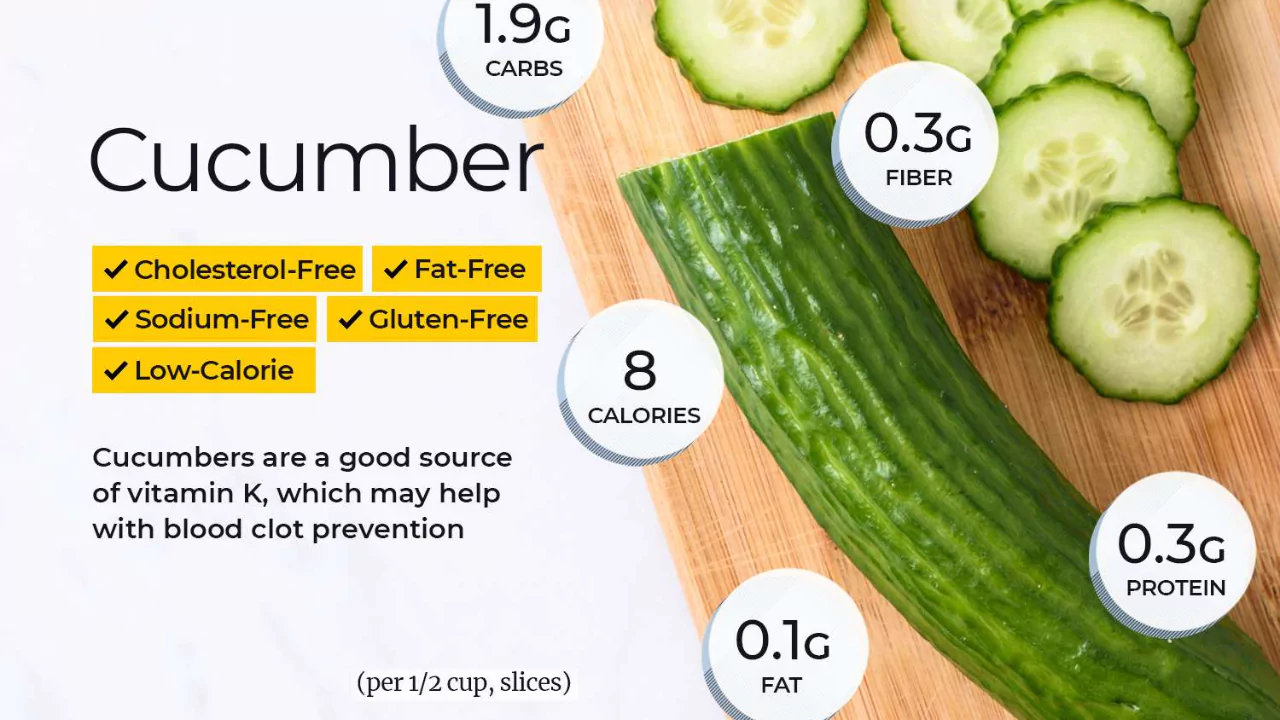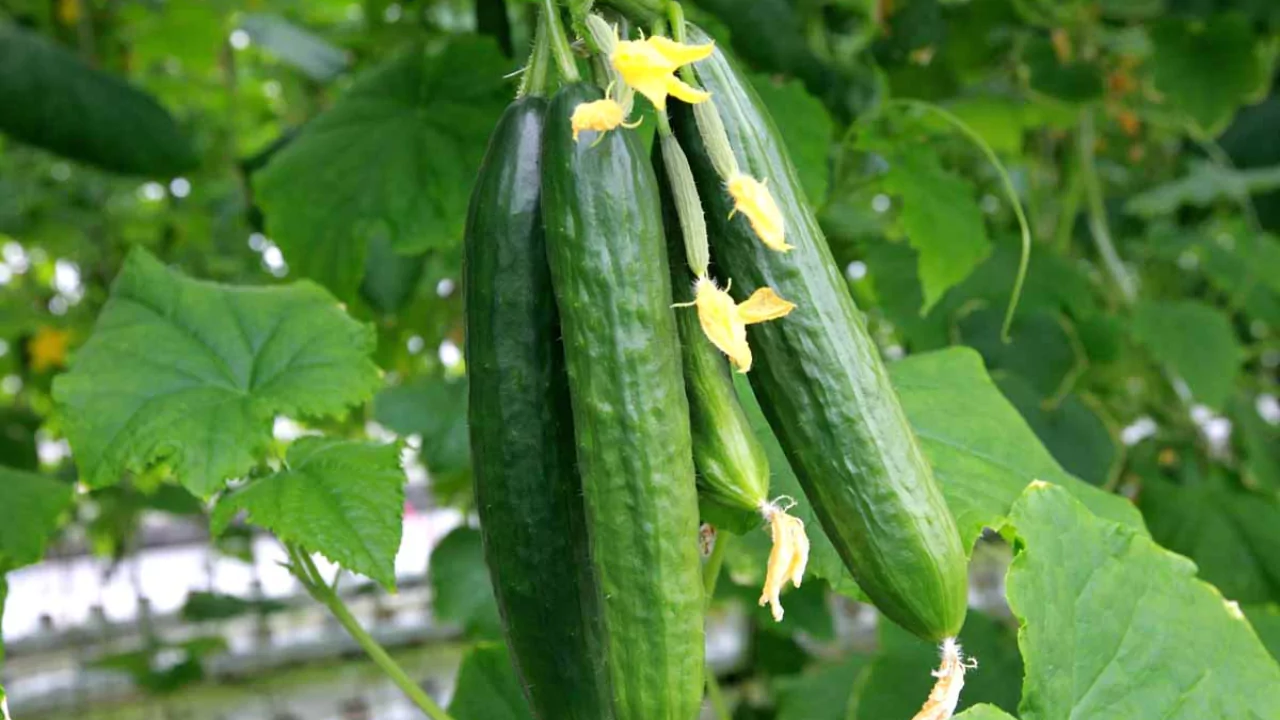
Searching for a light summer snack that won’t ruin your calorie count? Try simple cucumber rounds. With only 16 calories per cup, they are almost effortless for anyone watching their weight. They contain a modest 0.9 grams of fiber, along with 2.9 grams of carbohydrates, 0.2 grams of fat, and 1.8 grams of natural sugar. Because more than 95 percent of their weight comes from water, cucumbers help rehydrate the body while serving as a mild source of electrolytes.
The heart of the fruit may be nearly 20 degrees cooler than the hot outside air, which explains that unmistakable fresh feel after the first bite. Whether you are spending the afternoon at the beach or simply moving between rooms, cucumbers offer an easy pick-me-up that takes almost no effort to prepare. Slice them, sprinkle a little sea salt, and you are ready to go. Keep reading for other ways these crunchy gems can benefit your diet.
Cucumber Nutrition Information
Beyond being a low-calorie filler, cucumbers bring small, but meaningful, doses of protective compounds to the table. They carry lignans, a type of polyphenol that studies link to lower rates of heart disease and certain cancers, including breast, uterine, and prostate tumors.
They also pack antioxidants that seek out free radicals and limit the inflammation many researchers now tie to chronic illness. Evidence suggests that consistent exposure to these antioxidants may help shield the body from multiple cancers and even some autoimmune disorders over the long run.
Cucumbers are a strong source of vitamin K, a nutrient crucial for blood clotting and bone health, and they may help guard against osteoporosis. They also provide modest amounts of vitamin A, vitamin C, calcium, and folate.
Types of Cucumbers
In most supermarkets, you will encounter two main varieties: classic slicing cucumbers and English cucumbers, and either one works in most recipes. English cucumbers are longer, slender, and have thinner skin, smaller seeds, and a slightly sweeter taste.
They are sometimes called burpless cucumbers because they cause less gas. Stores usually wrap them in plastic to keep moisture in, since they are not coated in wax.
A visit to a farmers market may reward you with many other kinds. Watch for lemon cucumbers-these round, yellow fruits have a hint of citrus and a crisp, juicy bite.
Pickling cucumbers are shorter, often spiny, and have a thick, bumpy skin. Their dense flesh stays crunchy throughout the canning process, which is why they are the preferred choice for homemade pickles.
Buying Cucumbers
When you shop for any cucumber, choose firm, glossy, and deep green specimens. Skipping any that are shriveled, soft, or dull will spare you fruit that tastes bitter or is already spoiling.

Before leaving the supermarket, it is a good idea to check the finish on a cucumber’s surface. Many conventional cucumbers are coated with a thin layer of wax designed to protect the skin during long transport. This wax, while food-safe, sits uneasily on the palate, so buying organic, unwaxed fruit is worth the small extra cost. If only waxed cucumbers are available, a thorough scrub with a vegetable brush or a quick peel will remove most of the coating.
Using Cucumbers
At home, tuck the cucumbers into a perforated plastic produce bag and place them in the coolest part of the refrigerator. Do not wash them before storage; excess moisture promotes decay. Kept dry and shaded, cucumbers stay crisp for about one week.
When it is time to use one, slice off only as much as needed and seal the cut end tightly in an airtight container. Pop the leftover cucumber back into the fridge and plan to finish it within three days.
The fruit’s mild taste makes it a friendly companion to all sorts of dishes. Shredded or sliced, cucumber lightens salads, brightens smoothies, and cools steaming soups. Here are a few quick serving ideas:
- Munch raw spears plain or dip them into yogurt-based ranch dressing or tahini-rich hummus.
- Whisk vinegar, oil, and fresh dill to make a tangy vinaigrette, then fold in cucumber and a few rings of red onion.
- Toss cucumber cubes into a Greek salad bursting with tomatoes, Kalamata olives, red onion, and crumbled feta.
- Cucumbers complement fruit nicely and are unexpectedly tasty tossed with sliced peach and barely cooked barley for a light, subtly sweet salad.
- For something different, pur-c an equal amount of diced cucumber and honeydew melon with spinach and a splash of apple juice for a refreshing smoothie.
- An Asian-style cucumber side is equally welcome; just combine thinly sliced cucumbers with chunky peanut sauce, fresh cilantro and cubes of silken tofu.
- Alternatively, take a southwestern route by mixing diced cucumber with cubed avocado, ripe tomato and a sprinkle of black beans.
- To turn a pasta salad into a main, fold in drained noodles, parsley, olives and grilled chicken or fish, with cucumber slices gently stirred through.
Regardless of the recipe, cucumbers remain one of the most reliable low-cal vegetables around. When using richer dressings, cheese or nuts, measure them carefully. For best flavour, make the salads several hours ahead and store them in the refrigerator.